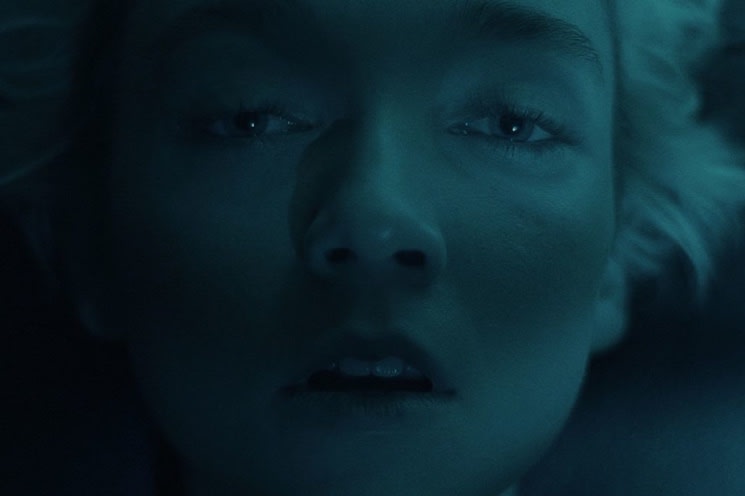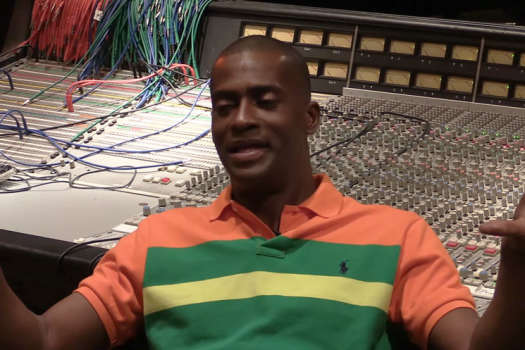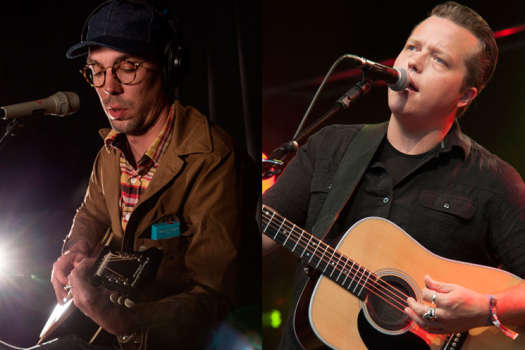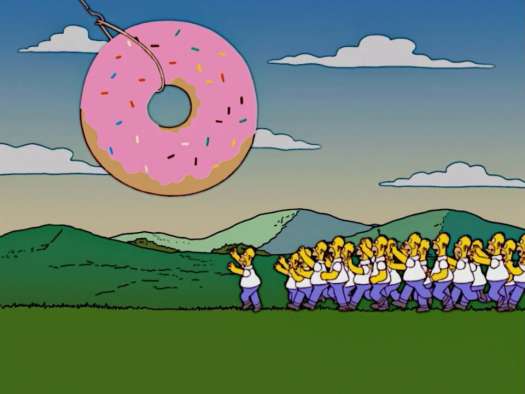Come True has a lot going for it: an incredible, haunting score, genuinely terrifying visuals and a sense of slow-burn atmospheric dread. All these elements don't always intersect in ways that makes sense, and culminate in a write-off of an ending with a final shot that's more frustrating than satisfying. But Come True is such a strong, ambitious, existential indie horror for so much of its runtime that it's definitely worth a watch.
Come True follows Sarah (Julia Sarah Stone, whose elfen features and wide eyes fit the film's surreal tone perfectly), a teenage girl dealing with some unexplained trouble at home — she's ignoring phone calls from her mom and sleeping on park benches or on her friend Zoe's (Tedra Rogers) couch. Sarah is also experiencing frightening, recurring nightmares of long hallways, flickering lights and humanoid figures with glowing eyes. Soon, she's passing out at school and being mocked by her classmates, and six cups of coffee a day aren't helping. Desperate for a solution, Sarah signs up for an experimental sleep study run by university student researchers, where she's strapped into a bizarre sci-fi getup and hooked into a monitor every night. At first, her nightmares disappear, and Sarah starts feeling well-rested for a change. But the researchers are strangely secretive about what the sleep study is really for, and Sarah's nightmares start to creep back in, more visceral than before.
Sarah's nightmares are unlike most others we see depicted in horror films. Black-and-white, flickering visuals that emanate static, they're industrial and stark, like a desolate city. Occasional humanoid figures lurk ominously, posed in macabre, clinical tableaus that would feel right at home on an episode of Hannibal or the (also Canadian) video game Soma, the latter of which explored the intersection of technology and the brain's ability to dream in a similar spooky, existential way. Come True is lit in blues and purples and scored with ambient synth tones that make the film feel as though it's rooted even deeper in the subconscious.
The bulk of the film takes place within the sleep clinic, an endless maze of academia that recalls the labyrinthian subconsciousness the sleep clinic patients are stuck in. When we follow Sarah outside of the sleep clinic, she's lit in washed-out, dull colours, suggesting even she isn't sure if she's asleep or awake, and that the waking world is becoming even less concrete as hallucinations bleed into daytime. Come True's most frightening moments echo the feeling of lucid dreaming or sleep paralysis, as characters are trapped within their bodies while hazy, but terrifyingly real, nightmares full of eerie lights and twisted lurk menacingly.
There's a lot stylistically and thematically going on in Come True, and as the film reaches its final, mysterious half hour, most of the questions it poses haven't been answered. It all builds to an impressively tense, atmospheric climax shot in moonlit fog and scored with discordant, escalating synths — and then ends with a single shot that seems to bizarrely undo what we've understood of Come True's mythology thus far. It effectively reduces the film's ambiguity to an anticlimactic reveal that doesn't make a lot of sense when one considers everything that's come before. It's a disappointing finale to an ambitious film, but setting aside the WTF-ness of its last shot, Come True is still an incredible achievement when it comes to style, aesthetic, and tone.
Fantasia International Film Festival is taking place online from August 20 to September 2.
(Raven Banner)Come True follows Sarah (Julia Sarah Stone, whose elfen features and wide eyes fit the film's surreal tone perfectly), a teenage girl dealing with some unexplained trouble at home — she's ignoring phone calls from her mom and sleeping on park benches or on her friend Zoe's (Tedra Rogers) couch. Sarah is also experiencing frightening, recurring nightmares of long hallways, flickering lights and humanoid figures with glowing eyes. Soon, she's passing out at school and being mocked by her classmates, and six cups of coffee a day aren't helping. Desperate for a solution, Sarah signs up for an experimental sleep study run by university student researchers, where she's strapped into a bizarre sci-fi getup and hooked into a monitor every night. At first, her nightmares disappear, and Sarah starts feeling well-rested for a change. But the researchers are strangely secretive about what the sleep study is really for, and Sarah's nightmares start to creep back in, more visceral than before.
Sarah's nightmares are unlike most others we see depicted in horror films. Black-and-white, flickering visuals that emanate static, they're industrial and stark, like a desolate city. Occasional humanoid figures lurk ominously, posed in macabre, clinical tableaus that would feel right at home on an episode of Hannibal or the (also Canadian) video game Soma, the latter of which explored the intersection of technology and the brain's ability to dream in a similar spooky, existential way. Come True is lit in blues and purples and scored with ambient synth tones that make the film feel as though it's rooted even deeper in the subconscious.
The bulk of the film takes place within the sleep clinic, an endless maze of academia that recalls the labyrinthian subconsciousness the sleep clinic patients are stuck in. When we follow Sarah outside of the sleep clinic, she's lit in washed-out, dull colours, suggesting even she isn't sure if she's asleep or awake, and that the waking world is becoming even less concrete as hallucinations bleed into daytime. Come True's most frightening moments echo the feeling of lucid dreaming or sleep paralysis, as characters are trapped within their bodies while hazy, but terrifyingly real, nightmares full of eerie lights and twisted lurk menacingly.
There's a lot stylistically and thematically going on in Come True, and as the film reaches its final, mysterious half hour, most of the questions it poses haven't been answered. It all builds to an impressively tense, atmospheric climax shot in moonlit fog and scored with discordant, escalating synths — and then ends with a single shot that seems to bizarrely undo what we've understood of Come True's mythology thus far. It effectively reduces the film's ambiguity to an anticlimactic reveal that doesn't make a lot of sense when one considers everything that's come before. It's a disappointing finale to an ambitious film, but setting aside the WTF-ness of its last shot, Come True is still an incredible achievement when it comes to style, aesthetic, and tone.
Fantasia International Film Festival is taking place online from August 20 to September 2.




